#aldabra giant tortoise
Text
Uncharismatic Fact of the Day
Do you hate getting water up your nose? The Aldabra giant tortoise doesn't! In fact, this species drinks through their nose; their flat snouts are specially designed to allow them to draw water from shallow pools, which is critical in an environment where water is scarce.

(Image: An Aldabra giant tortoise (Aldabrachelys gigantea) wearing a fashionable hat (Telfair's skink) by Nik Cole)
If you like what I do, consider leaving a tip or buying me a kofi!
238 notes
·
View notes
Text

Photo by Yotcmdr - Own work, Public Domain
164 notes
·
View notes
Text

Aldabra giant tortoise
By: S. Prato / L. Ricciarini
From: Éditions Rencontre Cards
1976
#mating cw#aldabra giant tortoise#tortoise#turtle#reptile#1976#1970s#S. Prato#L. Ricciarini#Éditions Rencontre Cards
56 notes
·
View notes
Text


ゾウガメもこんなにガッツリ水に浸かるんですね
@夢見ヶ崎動物公園
It was the first time I saw a giant tortoise soaking in water so deep.
@Yumemigasaki Zoological Park
17 notes
·
View notes
Photo
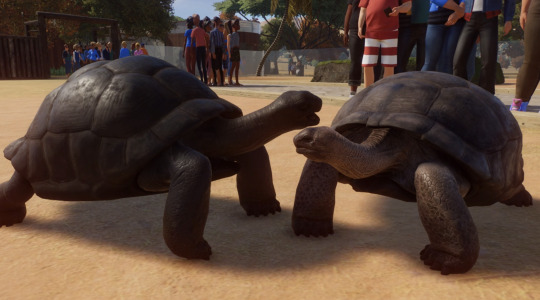
Tortoisee
32 notes
·
View notes
Text

Aldabra giant tortoise
#aldabra giant tortoise#animals#photography#photographers on tumblr#black and white#zoo portraits#pittsburgh zoo
10 notes
·
View notes
Text

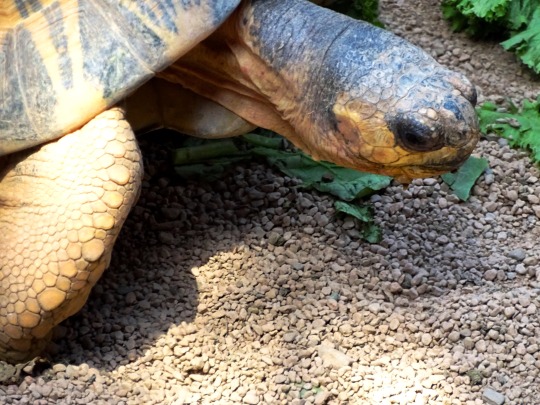



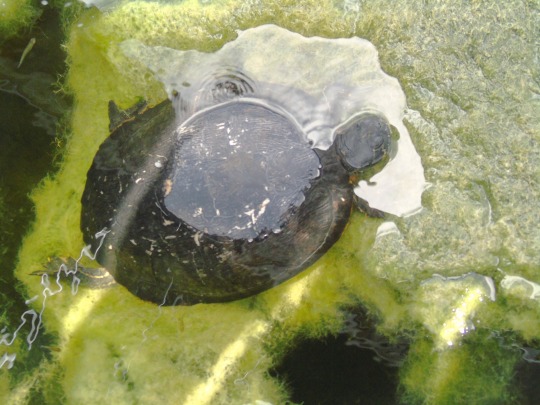
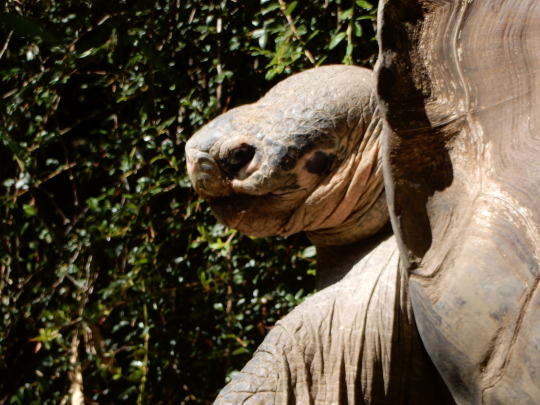

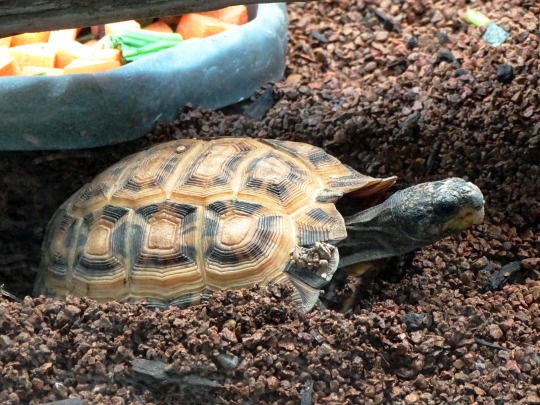



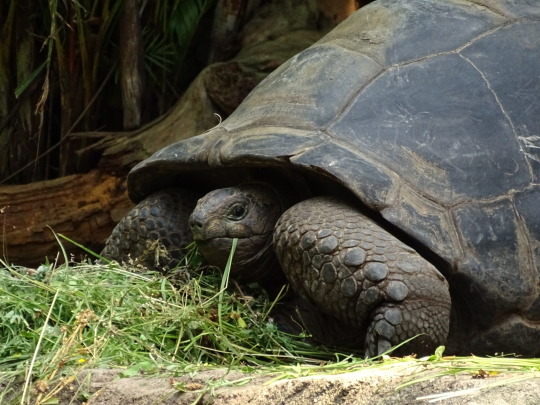




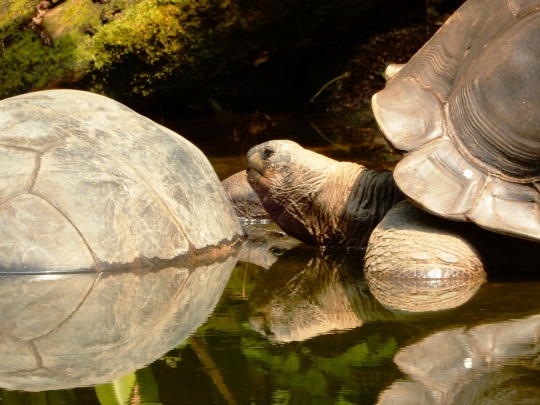

Turtle Adoption Day
Turtle Adoption Day is a "day of action for the protection of endangered reptiles." Specifically, the day supports the welfare of turtles. It appears to have been created by a woman named Christine Shaw, who made a blog post on November 25, 2011, on the website of Found Animals, an animal welfare organization that works to find new homes for distressed and abandoned animals. The day was first observed two days later.
Having a turtle as a pet is a large undertaking and can be a lot of work. Turtles have a long lifespan, meaning having one as a pet is a long-term commitment. This may not be ideal for many prospective owners. Turtles also need specialized—and many times expensive—care when it comes to their food, water supply, and cages, which also may not make them ideal pets for many. Additionally, turtles are often carriers of salmonella. Generally, conservation organizations take the view that turtles belong in the wild, not in homes as pets.
Still, many people do get turtles as pets, and Turtle Adoption Day is about reacting positively to some negative decisions others have made in this regard. Some people who get turtles as pets treat them like throw-away pets: they purchase baby turtles, view them as mini-turtles, and give them away or release them into the wild when they grow. When turtles are released into the wild, their chances of survival are slim. Additionally, many turtles are endangered species and are hunted by humans and have threatened habitats. Turtles released in the wild can also become invasive species. They can multiply, and may then damage flora and fauna. But, some turtle owners take them to animal shelters when they get bigger and they don't know how to care for them, instead of releasing them into the wild. It is these turtles that Turtle Adoption Day works to protect.
Turtles live in almost all climates around the world, and are found on every continent except Antarctica. Most species are found in southeastern North America and South Asia. Only five species can be found in Europe. Turtles are part of the order of Testudines, an order that also includes tortoises and terrapins. Testudines are split into two suborders: Cryptodira and Pleurodira. Most turtles are Cryptodira. The main difference between the two is that Cryptodira retract their heads straight back into their shells, while Pleurodira fold their necks to the side when they retract their heads. However, sea turtles, which are Cryptodira, are unable to retract their heads into their shells. Turtles are then split into 13 families and 75 genera, and there are over 300 species in total.
Turtles spend most of their time in the water. Freshwater turtles live in ponds and lakes, coming on land to bask in the sun. Sea turtles spend most of their time in the ocean, coming onshore to lay eggs on the sand. Most of these webbed-feet reptiles have hard shells that protect them from predators. The top part of their shell is called a carapace and the bottom is called a plastron. The carapace is made up of about 60 bones, and is covered with plates made of keratin called scutes. Besides hard-shelled turtles, there are are also soft-shelled turtles and leatherbacks, which have a thick skin covering their carapace.
Turtles are not very social animals. They are most active during the day, when they spend their time searching for food. Most are omnivores, eating animals such as fish, insects, mollusks, crayfish, snakes, frogs, worms, clams, and other turtles, as well as grasses, algae, and other plants. Their diet varies depending on their species, with some subsisting on a mostly vegetarian diet.
Like birds, turtles have beaks and no teeth. They also are egg-laying animals. After digging a nest on land in sand or dirt, they lay their eggs and leave; they don't nurture their young once they are born. Turtles lay between 20 and 200 eggs at a time, depending on their species. Most of their eggs are eaten by carnivores before they hatch, and many are eaten after they are hatched, as the baby turtles do not yet have fully-developed shells to protect themselves.
Turtles vary in size, but some may grow very large. The largest freshwater turtle in North America is the alligator snapping turtle, which can grow up to 2.5 feet in length and weigh up to 200 pounds. The largest sea turtle is the leatherback turtle, which can grow to about 4.5 to 5.25 feet in length and weigh between 600 and 1500 pounds. The largest soft-shelled turtle is the Yangtze giant softshell turtle, which can grow up to 3.6 feet across and weigh as much as 309 pounds.
Many species of turtles are threatened, endangered, or critically endangered. Additionally, many turtles who were once pets have ended up in shelters because their owners weren't able to properly care for them. This makes it even more necessary that there is a day dedicated to caring for and protecting turtles. Today, on Turtle Adoption Day, we do our part to protect turtles by adopting those without homes.
How to Observe Turtle Adoption Day
The most appropriate way to observe the day is to adopt a turtle that was once someone's pet. Turtles can be adopted through Found Animals or Petfinder, or through a reptile rescue organization. They can also be found in local listings such as Craigslist, as well as at local animal shelters. By giving them a new and proper home, you can help preserve one turtle's life, and help protect turtles in general, many species of which face endangerment. If you can't provide a home for a turtle, you could donate to a reptile rescue organization.
Before you adopt a turtle, it is imperative that you are prepared to do so. You must make sure you know what type of environment turtles need in order to live in captivity, and you must have a large enough habitat for your new turtle to live. For example, turtles need at least ten gallons of water per one inch of shell, and for each additional turtle, you need another ten to twenty gallons of water. They need a dry basking area where they can crawl around and dry off, they need access to lamps that give off heat and UVA and UVB rays, they need a submersible heater to keep water at a warm enough temperature, and they need a water conditioning solution and a filter. When adopting a turtle you must also remember that having one as a pet is a long-term commitment, they can be a lot of work, they can take up a lot of your time, and they can be expensive.
Source
#aldabra giant tortoise#Masoala Hall#Zoo Zürich#Zurich#New York City#animal#reptile#original photography#day trip#travel#vacation#tourist attraction#Red-eared Slider#Bronx Zoo#my favorite zoo#USA#TurtleAdoptionDay#TurtleSponsorshipDay#27 November#Giant South American River Turtle#Radiated tortoise#Spider tortoise#Florida#Florida Softshell Turtle#Green Cay Nature Center & Wetlands#East African black mud turtle
2 notes
·
View notes
Text
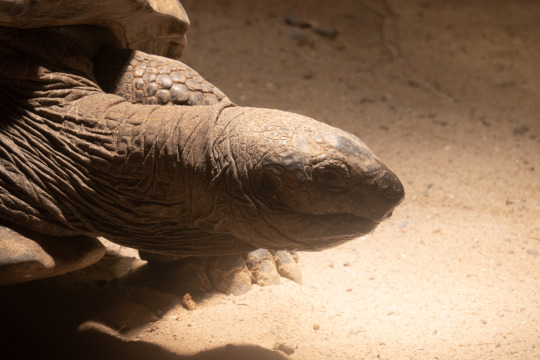
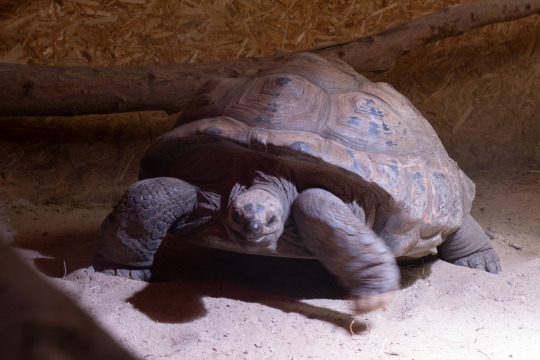
Tortue géante des Seychelles - C'est la plus grande tortue terrestre au monde. Elle peut mesurer jusqu'à 1,30m de longueur et atteindre 80 à 150kg
Lieu : Zoo de Lille
#animaux#animals#zoo#photo#photo animalière#animals photography#reptile#animaux sauvages#wild animals#turtle#tortoise#tortue#tortue géante#giant tortoise#giant turtle#tortue géante des seychelles#tortue des seychelle#aldabra tortoise#aldabra giant tortoise
3 notes
·
View notes
Text
Please enjoy four peaceful minutes of ASMR, brought to you by an Aldabra giant tortoise eating a head of lettuce at Reptile Gardens in South Dakota. (There’s a little bit of people talking at the beginning, but it’s mostly quiet other than the crunching and the sound of the heaters after that).
674 notes
·
View notes
Text
sometimes I think about Jonathan the blind bisexual horny almost 200 year old Aldabra giant tortoise who lives on St Helena with his boyfriend Frederick and think to myself were gonna be alright
truckin and fuckin for nearly 200 slutty slutty years they should invite him to lead a pride parade
#lgbt#gay#tortoise#turtle#aldabra tortoise#seychelles giant tortoise#reptiles#Aldabrachelys gigantea#he is also the oldest tortoise to have ever lived in case you were wondering#bisexual
3 notes
·
View notes
Text
Aldabra Tortoise: Your Comprehensive Guide to Adoption, Care, and Costs
The Aldabra tortoise, one of the largest tortoise species on Earth, has captured the hearts of reptile enthusiasts worldwide. Known for their impressive size, gentle demeanor, and longevity, these magnificent creatures have become increasingly popular for adoption and sale. If you're considering bringing an Aldabra tortoise into your life, this article will serve as your ultimate guide, covering topics like Aldabra tortoise for sale cheap, adoption, care, and costs.

Aldabra Tortoise for Sale and Adoption:
One of the most common queries surrounding Aldabra tortoises is where to find them. Craigslist is a platform where these tortoises are occasionally listed for sale or adoption. However, it's essential to be cautious and well-informed before making such a significant commitment.
Adult Aldabra Tortoise for Sale:
Adult Aldabra tortoises are highly sought after due to their impressive size and majestic presence. They can be found for sale, but it's crucial to ensure that the seller adheres to legal regulations. Additionally, inquire about the tortoise's health, history, and documentation to ensure its well-being.
Aldabra Giant Tortoise Cost:
Aldabra tortoises come with a hefty price tag, mainly because of their size and longevity. The cost can vary significantly based on factors like age, size, and source. On average, you can expect to invest several thousand dollars in acquiring an Aldabra tortoise.
Aldabra Tortoise Hatchlings for Sale:
For those looking to raise an Aldabra tortoise from a young age, hatchlings are sometimes available for purchase. Keep in mind that caring for a hatchling requires extra attention to their needs, including a suitable enclosure, diet, and protection from predators.
Aldabra Tortoise Care:
Proper care is crucial to the health and happiness of your Aldabra tortoise. These tortoises have specific requirements that must be met to thrive:
Habitat: Aldabra tortoises need a spacious outdoor enclosure with access to sunlight and shade. A secure fence is essential to protect them from potential threats.
Diet: Their diet consists of a variety of leafy greens, vegetables, and occasional fruits. A calcium supplement is also vital for their shell health.
Temperature: Aldabra tortoises thrive in warm, tropical climates. Maintaining a suitable temperature range is crucial for their well-being.
Hydration: Providing a shallow pool or water source for soaking and drinking is essential to prevent dehydration.
Veterinary Care: Regular check-ups with a reptile veterinarian are essential to monitor their health and address any medical concerns.
Aldabra Tortoise for Sale in California, Texas, and Beyond:
Aldabra tortoises can be found for sale in various locations, including California and Texas. When considering purchasing or adopting one, research local regulations and permits, as they vary by state and locality. It's crucial to abide by all legal requirements to ensure the ethical treatment and conservation of these magnificent creatures.
Adult Aldabra Tortoise for Sale - Be Informed:
If you're considering buying an adult Aldabra tortoise, gather as much information as possible about the tortoise's history and previous living conditions. A responsible seller will provide documentation of the tortoise's origin, health records, and any necessary permits.
Aldabra Tortoise for Sale - Factors to Consider:
When searching for Aldabra tortoises for sale, consider the following factors:
Reputable Sellers: Choose sellers or adoption agencies with a good reputation for ethical practices and animal welfare.
Health Assurance: Ensure that the tortoise is in good health and has been properly cared for.
Legal Compliance: Verify that the sale or adoption complies with local and international wildlife regulations.
Enclosure Preparation: Prepare a suitable outdoor enclosure with proper security and climate control.
Financial Commitment: Be prepared for the long-term financial commitment required for the care of these magnificent reptiles.
Conclusion:
Bringing an Aldabra tortoise into your life can be a rewarding and enriching experience. Whether you're interested in Aldabra tortoise adoption or purchasing one, it's crucial to prioritize their well-being, adhere to legal regulations, and commit to their lifelong care. These remarkable creatures are not just pets; they are stewards of ancient wisdom and natural wonders, deserving of our respect and dedication.
Before acquiring an Aldabra tortoise, take the time to research, prepare, and ensure that you can provide the love and care these majestic reptiles deserve. In doing so, you'll embark on a unique journey filled with wonder and admiration for the incredible world of the Aldabra tortoise.
Remember, owning an Aldabra tortoise is a privilege that comes with responsibilities. Treat them with the utmost care and respect, and you'll be rewarded with a lifelong companion and a living testament to the wonders of the natural world.
#aldabra tortoise for sale#adult aldabra tortoise for sale#aldabra tortoise for sale cheap#aldabra giant tortoise cost#giant aldabra tortoise for sale#aldabra tortoise price#aldabra tortoise for sale texas#aldabra giant tortoise pet
0 notes
Text
Giant Tortoises On Curieuse
Huge fuck off great big tortoises are a thing that exist here in The Seychelles. They’re commonly kept as pets which is amazing as long as they’re treated properly. We were told that back in the day anyone could have one but there ended up bring so much mistreatment with these beautiful animals being kept in appalling conditions. These days you need a licence to have one and welfare officers will…

View On WordPress
0 notes
Text

Seychelles Giant Tortoise (Aldabrachelys gigantea hololissa), family Testudinidae, Curieuse, The Seychelles
This turtle is a subspecies of the Aldabra Giant Tortoise.
The oldest conformed Seychelles Giant Tortoise is Jonathan the Tortoise, who has reached an age of 191 years old.
The carapace reaches an avg length of 122 cm (48 in), and an average weight of 250 kg (550 lb).
photograph by Laura Bok
#giant tortoise#tortoise#turtle#aldabrachelys#africa#reptile#testudinidae#herpetology#animals#nature
367 notes
·
View notes
Photo

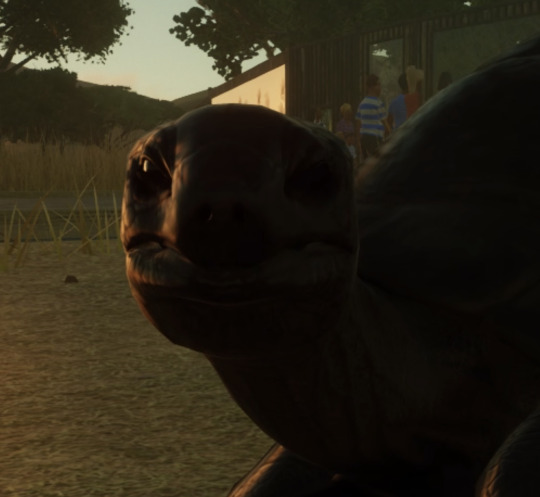
What you lookin’ at biatch?
Yeah, that’s right- keep walking..
2 notes
·
View notes
Text
Please reblog for a bigger sample size!
If you have any fun fact about Seychelles, please tell us and I'll reblog it!
Be respectful in your comments. You can criticize a government without offending its people.
41 notes
·
View notes
Text

The African spurred tortoise (Centrochelys sulcata), also called the sulcata tortoise, is an endangered species of tortoise inhabiting the southern edge of the Sahara Desert, the Sahel, in Africa. It is the largest mainland species of tortoise in the world, and the third-largest in the world, after the Galapagos tortoise and Aldabra giant tortoise. It is the only living species in its genus, Centrochelys, with the five other species in the family already extinct.
72 notes
·
View notes